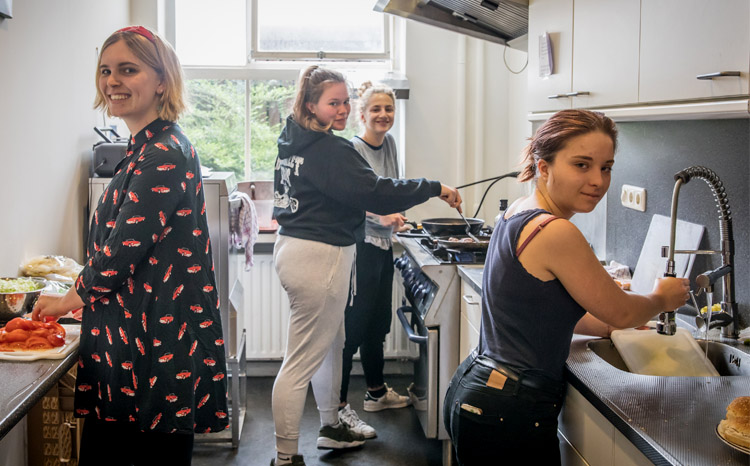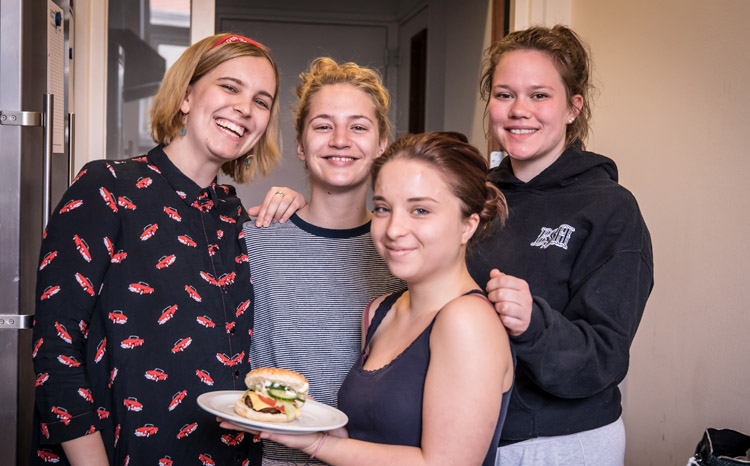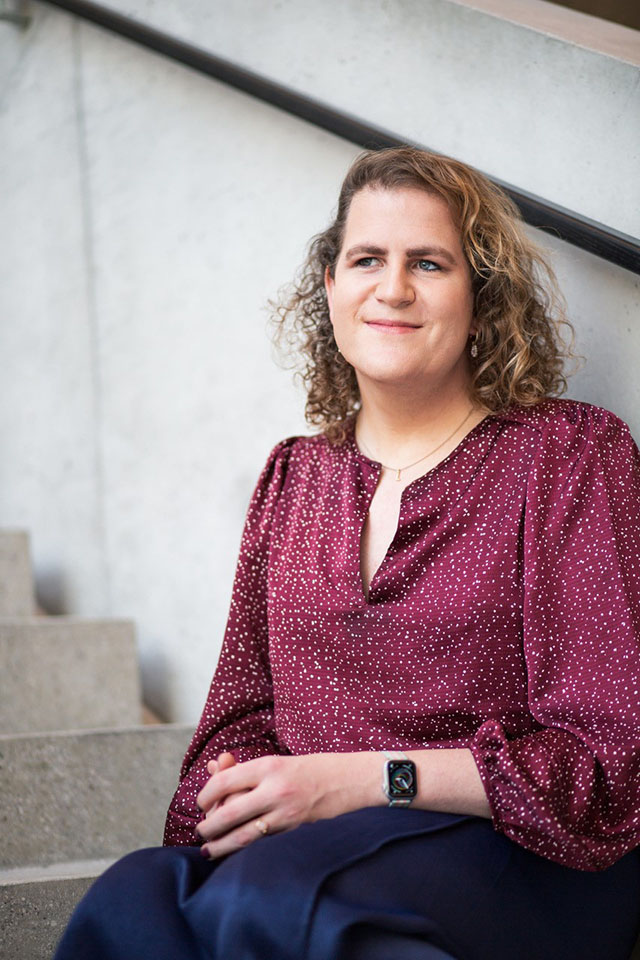Cooking for the homeless
Two large pans of sauce simmer on the stove in the small kitchen of the Salvation Army. UM students Carlotta, Emma, Julia and Alice drain spaghetti, add some cream to the meat and take the grated cheese from the refrigerator. They are making pasta bolognese for the people who receive shelter and support here.
When she previously lived in Hamburg, Carlotta Borges, a European Studies student, saw homeless people who didn’t have anywhere to go. “There are hardly any shelters there. In the worst case, people freeze to death on the streets.” When she came here to study, she decided to address the fate of the homeless in Maastricht. “I wanted to give something back to the city”, says Carlotta. More than a hundred people responded to her initial message on the Sharing Caring page on Facebook. About half of them came to the meeting where the idea of helping had to take on more concrete forms.

Through Match Maastricht, Carlotta heard that the Salvation Army in Maastricht manages two Domus houses, a type of assisted living for people with substance abuse issues. The caretakers do not have the time to cook extensively, so microwave meals are served. The residents eat in two shifts, at five o'clock and at eight o'clock in the evening. Carlotta proposed to make a fresh meal every week—not only tastier, but also cheaper.
Cooking plan
After a start-up period of a couple of months, the club of volunteers is now slowly taking shape. On average, the cooking is done once a week, but the aim is twice a week. Carlotta: “We’re currently in discussions with people who’ve indicated that they want to participate. In this way, we hope to have about twenty students who are really involved, rather than sixty people we can’t fully rely on. We also work together with The InnBetween (the student chaplaincy). They help us, for example, by preparing in advance a cooking plan for six weeks.”
Each time, there are now a maximum of five students preparing the meal. More people cannot fit in the small kitchen, which also contains a whopper of a six-burner stove, so cooking for about 20 people can be done easily.
Nasi
A few days before they come, the volunteers send their weekly recipe to the Salvation Army. The employees there do the grocery shopping. “When we arrive, all the ingredients are in the fridge, so we can start right away. By now, we know that the residents mainly like a meal that contains meat and is not too seasoned. ‘Normal’ food—that's what they like best.” The students also eat with them. “The residents appreciate that”, Carlotta knows, not that they always show it. “The behaviour of addicts is sometimes unpredictable. Someone comments on occasion, but we take that into consideration.”
Today, the residents seem to think the food tastes good. “Nice”, says John, a somewhat older man who has wandered in behind his rolling walker. “I don’t eat here every day, but I do when the students cook. That is something different than eating from a plastic container. I especially like pasta or nasi.” A fellow resident wants to know if the food is spicy. When the answer is ‘no’, he shuffles out with a full plate, sounding out a sincere ‘thank you’ while leaving.

Also read
-

Frederik Claasen, the head of policy at our partner organisation Solidaridad Network on the opportunities and obstacles facing smallholder farmers in their data ecosystems.
-
After several rocky years, Maastricht University alum Lea Vink has found her feet in Vienna. Professionally, she is taking new steps at the crossroads of aviation and organisational psychology. And on a personal level, luck has smiled on her since her transition from man to woman.
-
Do students' perspectives on education matter? Should educators listen to the "student voice", and if so, how? EDLAB Innovation Coordinator and former UM student Lena Gromotka reflects on the four types of student voices: the Complainer, the Critic, the Idealist, and the Suggester.
- in Featured
- in Human interest
- in Students

